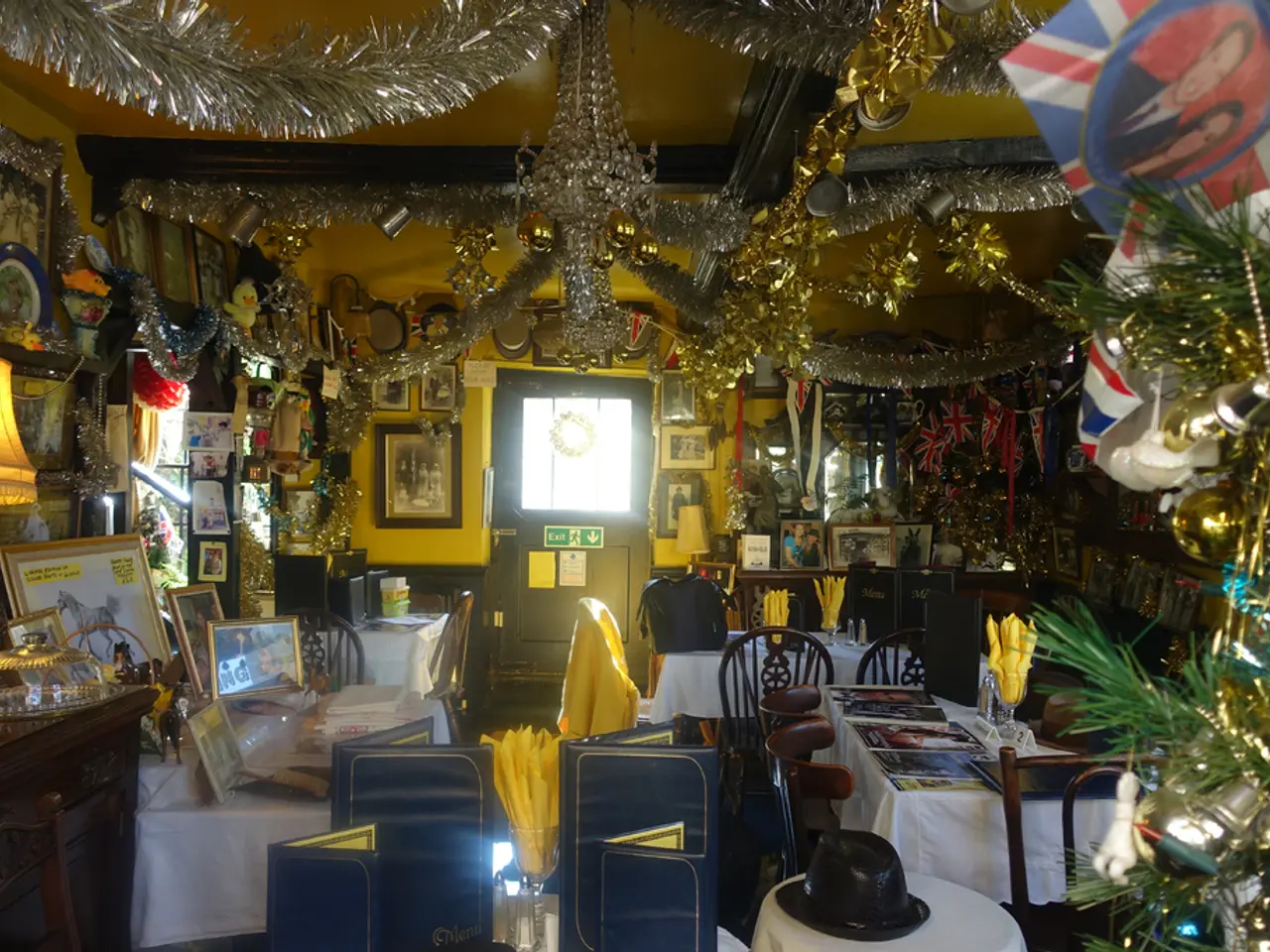"Round Tables Gaining Popularity in Interior Design: Latest Revival and Enhancements"
In the realm of interior design, a fascinating trend is emerging – the return of round tables. This shift in preference reflects a broader cultural movement towards values such as equality, intimacy, and connection.
Round tables, with their circular shape, symbolise these values by fostering a sense of community and inclusivity. Every person seated at the table has an equal vantage point, breaking away from the hierarchical nature of traditional rectangular tables.
## Significance of Round Tables
The round shape encourages equitable interaction among all individuals seated at the table, promoting a sense of unity and shared experience. This design choice reflects a desire for more democratic and inclusive spaces.
Round tables facilitate face-to-face interaction and create a cozy, intimate atmosphere. They encourage lively discussions and shared experiences, which are increasingly valued in a society that seeks deeper personal connections.
From a design perspective, round tables add a touch of elegance and fluidity to spaces, breaking away from the rigid lines of traditional furniture. They can be especially effective in smaller rooms, where they help create a sense of openness.
Moreover, round tables are versatile and can fit into various design styles, making them a popular choice for diverse interior design needs.
## Reflection of Changing Societal Values
The resurgence of round tables aligns with broader societal shifts towards collaboration, sustainability, and personal connection.
In a world increasingly dominated by technology, round tables serve as a reminder of the importance of face-to-face interaction and shared experiences in building strong relationships.
The emphasis on round tables also aligns with the growing importance of collaboration and teamwork in both personal and professional settings. They facilitate a circular flow of ideas and interactions.
In some contexts, round tables are chosen for their timeless design, which can be more sustainable over the long term as they remain stylish beyond fleeting trends.
Overall, the return of round tables underscores a cultural longing for more harmonious, inclusive, and meaningful spaces that foster deeper connections among people.
Designers are reimagining formal spaces like receiving rooms, parlors, and dining rooms to create environments that foster connection, intimacy, and equality. Families who wish to foster egalitarian dynamics might opt for a circular table as a physical embodiment of shared values and inclusivity.
The home plays an increasingly important role in nurturing relationships as work-life boundaries blur and time together becomes more precious. Designers are using round tables to promote warmth, conversation, and shared humanity as family dynamics evolve and formality fades.
From ancient history, where circles were associated with harmony and interconnectedness, to modern interior design, the round table continues to symbolise unity and inclusivity. Circles as a symbol predate King Arthur's round table and carry deeper meaning across cultures, representing eternity, wholeness, and the cyclical nature of life.
In conclusion, the resurgence of round tables in interior design is more than just a design trend. It is a reflection of the way our spaces and relationships are evolving, fostering connection, dissolving hierarchy, and encouraging intimacy in a way that resonates with modern living.
In light of this social transformation, news about the comeback of round tables in interior design is not just about decor, but a testament to the growing emphasis on equality, unity, and personal connections within modern lifestyles and home-and-garden settings. Furthermore, the resurgence of round tables underlines the importance of interior-design choices that reflect such values, promoting a democratic, inclusive, and harmonious atmosphere in homes and formal spaces alike.








